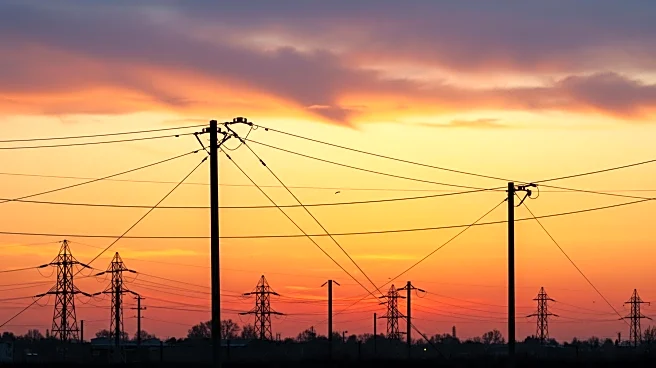What's Happening?
The traditional one-way flow of electricity is being replaced by a multidirectional system to address rising energy demands. Utilities are exploring new tools and technologies to optimize power delivery and reduce costs. Industry experts highlight the need for innovative power system optimizations to manage increasing loads without resorting to costly infrastructure expansions. Southern California Edison is investing in AI-enhanced system management to improve grid operations. Former Federal Energy Regulatory Commission Chair Jon Wellinghoff emphasizes the importance of flexibility in the power system, which can be achieved through automated AI platforms. Despite these advancements, some utilities face financial and technical barriers to adopting flexible operations.
Why It's Important?
The shift towards a multidirectional power system is crucial for the U.S. energy sector as it seeks to balance rising demand with cost-effective solutions. By leveraging AI and flexible data center loads, utilities can potentially reduce peak demand and prevent blackouts. This approach not only enhances grid reliability but also offers financial benefits by deferring infrastructure investments. However, the transition requires overcoming regulatory and operational challenges. The success of this transformation could lead to more sustainable energy practices and lower electricity costs for consumers, while also supporting the integration of renewable energy sources.
What's Next?
Utilities are expected to continue investing in advanced technologies like AI and distributed energy resource management systems (DERMS) to enhance grid flexibility. Regulatory bodies and industry stakeholders will need to collaborate to break down existing silos and create a cohesive framework for integrating these innovations. As utilities adapt to this new paradigm, they may also explore new business models that prioritize operational technologies over traditional infrastructure investments. The ongoing development of flexible power systems will likely influence future energy policies and market dynamics.
Beyond the Headlines
The transition to a multidirectional power system has broader implications for energy policy and market structures. It challenges the traditional utility business model, which relies on capital expenditures for infrastructure development. By shifting focus to operational technologies, utilities can unlock new revenue streams and improve customer engagement. This evolution also aligns with global efforts to reduce carbon emissions and promote sustainable energy practices. As the industry navigates these changes, it will need to address potential regulatory hurdles and ensure equitable access to the benefits of advanced energy technologies.
















